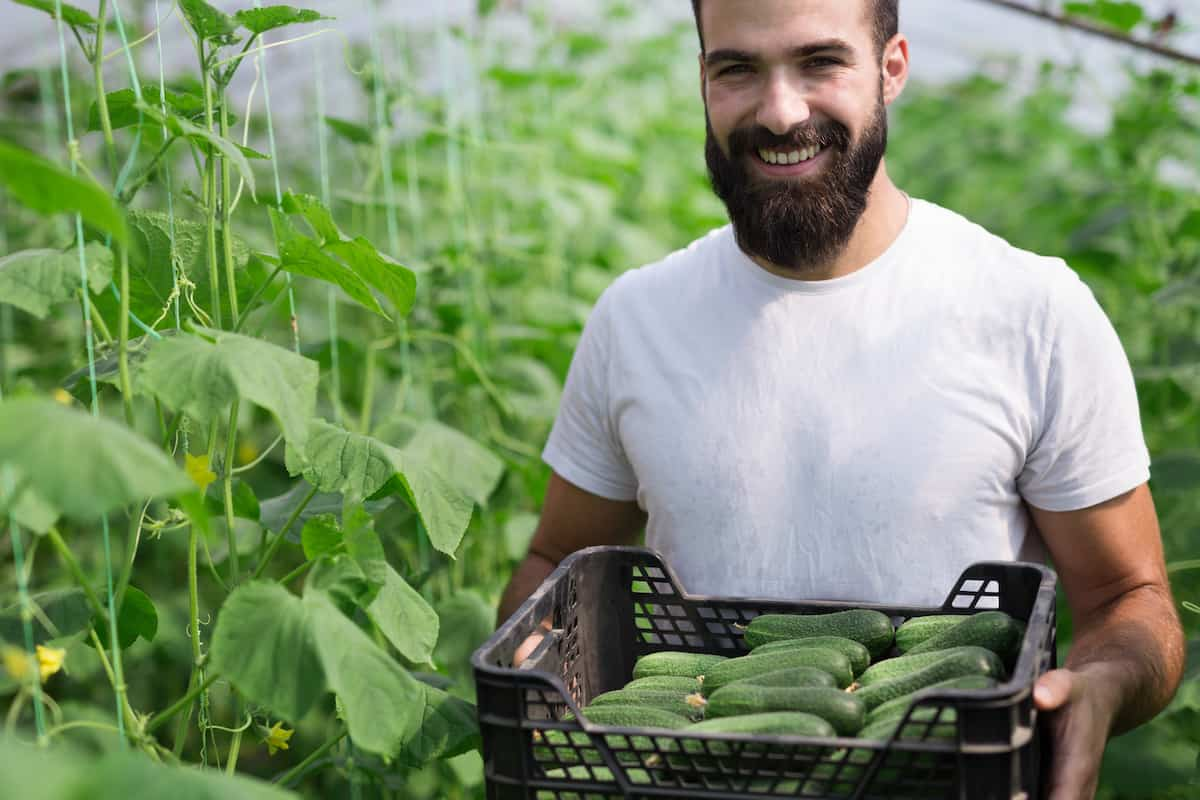Growing food in greenhouses is an important part of the global food supply. Commercial greenhouse farms provide most fresh produce in grocery stores and restaurants. Urban areas, however, are increasingly looking for solutions to bring more locally grown fruits and vegetables to city dwellers with growing demand and limited space for new farms. Combined with urban areas, urban greenhouses offer a wide range of benefits for commercial farming. Take a look at what they are, how they work, and some examples you can find in your area.

Urban Greenhouse Farming
What is an Urban Greenhouse?
In an urban greenhouse, food is grown in controlled conditions indoors, like in an outdoor greenhouse, but the product is sold to people in the city. Various challenges people face in growing food in cities can be addressed with these buildings. In addition to reducing food miles, they can increase access to healthy food, create local jobs, and reduce energy consumption.
In urban greenhouses, hydroponics or aquaponics are used, efficient systems that do not require soil. A hydroponic system uses water and nutrients to grow plants, while an aquaponic system uses water filtered from fish or other aquatic animals to fertilize the plants.
Common Types of Urban Greenhouses
There are several types of urban greenhouses that defy rural farming traditions and use space much more efficiently. Below are some of the most common urban greenhouses types and gardens:
- Hydroponic/Vertical Greenhouse
- Aquaponic Greenhouse
- Rooftop Greenhouse
- Community Greenhouse
Hydroponic/Vertical Greenhouses
The most basic vertical gardening system stacks pots of seedlings on top of one another rather than laying them out in horizontal rows. The water will trickle down to the plants at the bottom of the stack as you water the top plants. The most advanced vertical greenhouses use hydroponic systems to provide optimal nutrients and plant watering schedules. Additionally, they can use more sustainable mediums, such as coconut fibers or aged bark, instead of conventional soil. The use of vertical greenhouse systems can even eliminate the need for soil in some cases.
Aquaponic Greenhouses
Urban and suburban dwellers with small backyards can build an urban greenhouse with an aquaponic system instead of taking up acres of land. A mini-ecosystem of fish and plants is housed in an aquaponic garden, which requires no soil and is much more compact. Fish waste circulated by running water provides nutrients to plants in aquaponic systems. By purifying the water, the plants return it to fish safely and cleanly. Due to its natural source of nutrients from fish rather than synthetic sources, this system is very sustainable and organic.
Rooftop Greenhouses
Cities are increasingly constructing rooftop gardens and greenhouses. Building top gardens are any gardens that are located on top of buildings. They can serve purely aesthetic purposes or be functional. Vertical farming systems or community gardens can be installed in rooftop greenhouses if the space is large enough.
The roof of a building has to bear more weight when there is a rooftop greenhouse, which is a common misconception. A proper installation will involve building engineers monitoring the rooftop’s load capacity and installing additional support structures if needed.
Community Greenhouses
A greenhouse like this is usually rented or purchased by community members to do their gardening. Because community greenhouses and gardens have flipped abandoned lots, they have become educational and social sites for community members.
In case you missed it: Smart Farming in Greenhouse: How to Start Using IoT Automate and Optimize the Growing Process

How To Start an Urban Greenhouse
Urban greenhouses can plant significant benefits into a person’s life, and the best part is that they are easy to start. Follow these steps to grow your urban greenhouse.
Select a Type of Urban Greenhouse
A greenhouse does not require you to be an engineer or have much agriculture knowledge. Many DIY urban greenhouses can be built, or you can purchase pre-made urban greenhouses and quickly assemble them at home. In addition, urban greenhouses don’t cost a fortune to start, and you can usually find good deals online.
Choose the Right Plants
The next step is to choose the kinds of plants you want to grow in your urban greenhouse. You should consider the following factors:
- Urban greenhouse size
- Climate
- Sunlight
- Plant hardiness
You should do some research to find out what plants will grow well in your climate. You should also consider how intense the sunlight will be. For instance, if your greenhouse is next to a south-facing wall, it will receive a lot of direct sunlight, which can overheat plants. Choose hardy and forgiving plants, such as cucumbers, green beans, and lettuce, if you are a beginner.
Create a Planting Schedule
Spring is not the only time of year when plants begin to grow. Vegetables like cabbage and asparagus can grow in the fall and thrive in the winter. Plants can potentially be grown all year round in an urban greenhouse. Make a planting schedule by taking some time. Choose plants that can be harvested at different times of the year. Your local plant nursery can help you if you have any questions.
Keep the Internal Temperature Steady
Maintaining the temperature is one of the unique challenges of using greenhouses. During winter nights, however, temperatures can also drop quickly. Monitoring temperature can be done with several tools. The first thing you should do is install a thermometer in your greenhouse. In areas with cold winters, electric heaters are almost always necessary. If you are living in an area with extremely high temperatures, a dark tarp large enough to cover your greenhouse will help block sunlight.
Regularly Check for Pests and Diseases
The greenhouse can help keep pests out, but it can also keep them in if they manage to get inside. Regularly checking for pests and diseases in a greenhouse is important since infestations spread quickly. If you want to clean your urban greenhouse, consider using a fogger occasionally. The most effective way to control the spread of pests and diseases is to disinfect gardening tools, including shears and pollination brushes consistently. Before bringing any outside plants inside the greenhouse, ensure they are pest-free.
Benefits of an Urban Greenhouse
- Better use of space: An urban greenhouse does not have to worry about soil type, sunlight, rainfall, or temperature. In this way, outdoor farmers can eliminate many of their challenges.
- Increased production: Urban greenhouses can grow more plants than outdoor farms because they have a controlled environment. As a result, more food can be produced per unit of space.
- Higher quality food: Growing crops in urban greenhouses ensures they are fresh, taste good, and maintain high-quality levels.
- Fewer Pesticides: An urban greenhouse reduces the need for pesticides, meaning the product will be safer and healthier.
- More sustainable food: Food grown in urban greenhouses is naturally more sustainable than food grown outdoors.
- More access to healthy food: Greenhouses in urban areas are designed to produce fresh produce that is nutrient-dense and healthy. As a result, greater availability of healthy food can be found in urban areas.
In case you missed it: Automation and Robotics in Greenhouse Farming

Conclusion
As the world’s population continues to grow, urban greenhouses can be used to increase food production. According to researchers, approximately two out of three people will live in an urban environment by 2050. Urban dwellers can gain access to fresh produce more efficiently by establishing vertical greenhouses in cities instead of traditional farming, which takes up more land and takes longer to transport.
- Feed Your Flock for Less: Top 10 Tips to Save on Chicken Feed
- Ultimate Guide to Ossabaw Island Hog: Breeding, Raising, Diet, and Care
- Hatching Answers: The Top 10 Reasons Your Chickens Aren’t Laying Eggs
- Eggs and Economics: Breaking Down the Cost of Raising Backyard Chickens
- Defend Your Greens: Proven Methods to Keep Iguanas Out of Your Garden
- Ultimate Guide to Cinnamon Queen Chicken: A Comprehensive Guide for Beginners
- Ultimate Guide to California Tan Chicken: Breeding, Raising, Diet, Egg-Production and Care
- Ultimate Guide to Marsh Daisy Chicken: Breeding, Raising, Diet, and Care
- 10 Types of Chicken Farming Businesses You Can Start for Profits